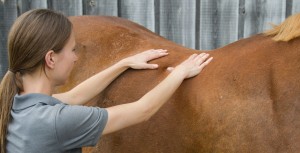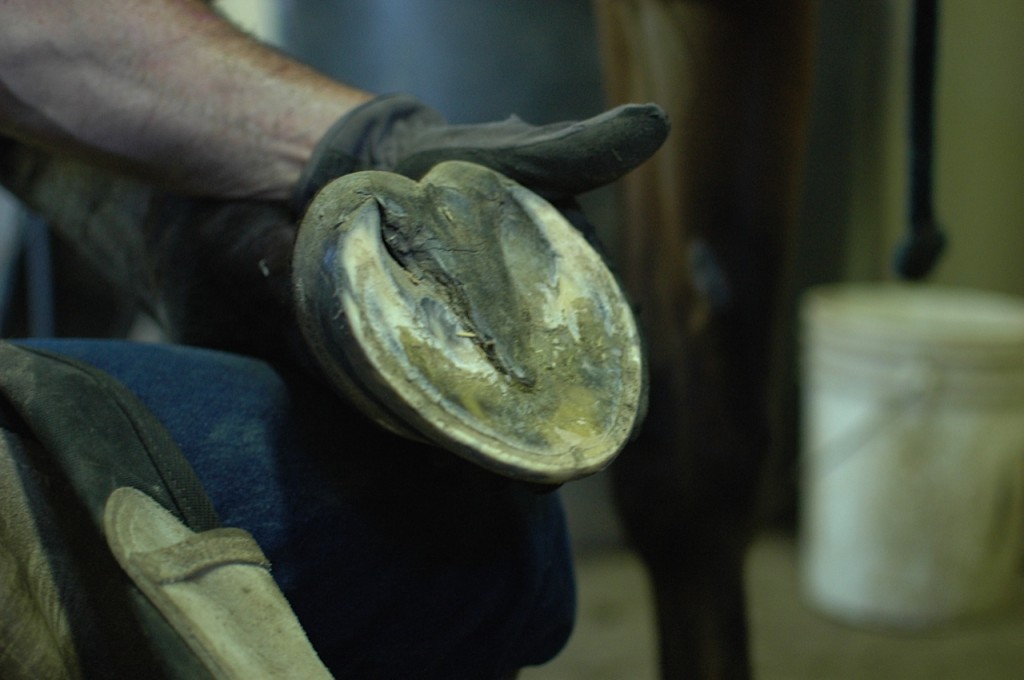Like any decision relating to your horse’s health care, making informed choices is important. When it comes to complementary therapies, this means getting a clear picture of what they can (and cannot) offer, who has the education and training to safely deliver them, and how they fit in with your horse’s regular veterinary care. … Read the rest
]]>Like any decision relating to your horse’s health care, making informed choices is important. When it comes to complementary therapies, this means getting a clear picture of what they can (and cannot) offer, who has the education and training to safely deliver them, and how they fit in with your horse’s regular veterinary care.
In this article, first published in Canadian Horse Journal, I take an in-depth look at equine massage, chiro and acupuncture, and explore how and when they can best be used in the care of your horse. Continue reading…
]]>
Marc-Andre Blouin didn’t necessarily start out with the intention of racing all his horses barefoot, but since he started, he hasn’t turned back. “When we started out, one of the things for us was, they had to be horses first, which meant that they got turned out,” says Blouin. … Read the rest
]]>Marc-Andre Blouin didn’t necessarily start out with the intention of racing all his horses barefoot, but since he started, he hasn’t turned back. “When we started out, one of the things for us was, they had to be horses first, which meant that they got turned out,” says Blouin. “But I couldn’t keep shoes on them when they were out and racing fit – they’d keep pulling them. And we wanted to be able to turn them out in groups too. We’d always pulled their shoes in the winter anyway, so we thought, hey lets try this and see how it works.”
Over time, the difference that Blouin has seen in his horses’ hooves has lead him to become a strong advocate for the benefits of going barefoot. “The way I describe it is that the hoof is probably one of the organs with the best capacity to adapt. It will adapt to the level of stress that it is being exposed to. But for it to adapt it has to be stimulated.
“It’s the same way your hands get calluses. You’ve got to go out and use them, and yes the first few times, when you’re not used to it, you’ll get blisters. But what does the body do? It adapts and builds something stronger. Which is what the horse’s hoof will do too. But if it’s got a shoe on, it’s not going to get that stimulation.”
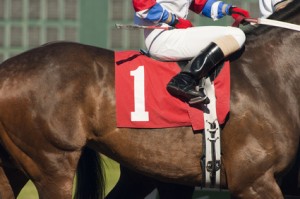 When Blouin began racing horses barefoot in 2007 there was no provision in the rulebook to allow it. “For years I had to ask permission before every single race. And if the track was off, they wouldn’t let me. And they said I couldn’t run on the turf either,” recounts Blouin. “Well one day we were in to run at Fort Erie, and there was mud galore. I thought, they’re going to ask me to put shoes on. But they didn’t. And my mare ended up winning.”
When Blouin began racing horses barefoot in 2007 there was no provision in the rulebook to allow it. “For years I had to ask permission before every single race. And if the track was off, they wouldn’t let me. And they said I couldn’t run on the turf either,” recounts Blouin. “Well one day we were in to run at Fort Erie, and there was mud galore. I thought, they’re going to ask me to put shoes on. But they didn’t. And my mare ended up winning.”
With renewed determination, Blouin decided to enter a horse on the turf at Woodbine two weeks later. “I got called in that morning and they said either you’ve got to put shoes on or scratch her. And I said, ‘I’m doing neither.’ I told them I wasn’t going to scratch her. If they wanted to, they were in a legal position to do it, if they deemed it unsafe. But I told them that I do not in any way find it unsafe.
“To me, when I ride my horses, they actually feel more sure-footed,” continues Blouin. “And that’s the thing, nobody’s ever been able to give me any scientific documentation that they get better traction with flat shoes on the turf.”
The science of shod vs. shoeless
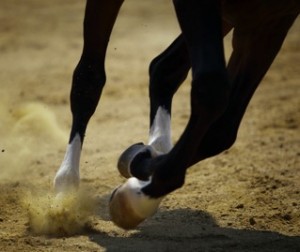
Horses have a number of sensory receptors in their hooves, much like we do in our hands and feet
Since the introduction of synthetic track surfaces, a fair amount of research has been done to study hoof-track interactions, particularly with respect to the properties of different surfaces. But differences between barefoot and shod horses have yet to come under the same degree of scientific scrutiny. “To date there have been no studies to measure a group of horses racing with shoes compared to a group without,” notes Jeff Thomason, PhD, a hoof biomechanics researcher at the University of Guelph.
Outside of racing, studies are limited as well. One 2006 study, which looked at Warmblood horses trotting on an asphalt surface, found differences in hoof impact forces between synthetic plastic shoes, steel shoes and the unshod foot. The vibrational forces after impact were reduced fastest in the unshod foot, while steel shoes increased both the maximal amplitude and the frequency of the vibrations caused by impact.
Racetrack surfaces, however, are much more compliant than asphalt and have a significant dampening effect on impact forces. The extent to which the absence of shoes affects hoof impact on those surfaces, including the effect on traction, is not yet known, though Thomason has collected some preliminary data with Blouin.
Further complicating matters, is the fact that different horses will respond differently to changes in shoeing and track surfaces. “It’s well known that even with shoes on, individual horses behave differently in response to track conditions,” says Thomason. “One horse may be able to get traction in mud, by altering its own timing of the footfall and when it puts the power on, while another might struggle. Each animal has a different capacity for adjustment.”
To what extent horses are able to sense more underfoot without shoes is also another area of consideration. Certainly, it is known that horses have a number of sensory receptors in their hooves, much like we do in our hands and feet. Where shoes limit this sensation, the consequences have not been studied such that any cause-and-effect conclusions can be made, says Thomason.
Searching for answers
“When it comes to the question of going barefoot, I think it’s important to avoid a dogmatic approach,” emphasizes Thomason. “Should horses be run barefoot? I see absolutely no reason why not, so long as they have the traction and the hoof isn’t worn away by the surface. But is it right for every horse? Probably not. At the moment we really do not know enough to answer all the questions and we certainly don’t know enough to generate the perfect way to address a shod foot or an unshod foot.”
For Blouin and his farrier Terry Gerber, it’s been largely a process of trial and error. Though Blouin had read up on different techniques and spoken with the likes of Pete Ramey, a prominent barefoot trimmer, he found it hard to track down any straightforward answers. “There were a lot laminitic horses doing well barefoot and a lot of riding horses doing well barefoot, but there was nobody out there running 60 kilometers an hour.”
“Terry’s been great because she’s always kept an open mind about it,” notes Blouin. “She didn’t come in here and say, this is the way it has to be done.” For her part, Gerber doesn’t consider herself a “barefoot trimmer,” per se, and has clients both with and without shoes. “I think barefoot is great if you can do it, but it’s not necessarily going to work or be practical for everybody’s situation,” she says.
Nor does Gerber necessarily subscribe to one particular school or type of barefoot trimming. “I think it’s important to consider the whole body, and watch how the horse moves.”
Ground level
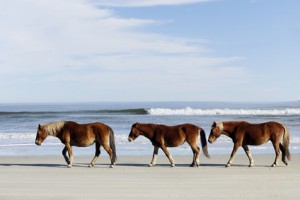
Research has found that in feral horses hoof quality is influenced both by footing conditions and the distance that horses travel.
Another part of the equation in barefoot horse keeping is the condition of the ground, adds Gerber. The types of surfaces that a horse spends their time on, at work, rest or play can affect the quality of the hoof that will grow.
Research from feral horse populations supports this observation. In an extensive study of different Australian feral horse herds, researchers found that hoof form and structure were affected by a combination of the type of footing and the distance that the horses travelled.
Blouin believes that having his horses turned out for the day is important in maintaining the integrity of their hooves. That, and speed work on their sand track. His horses’ hooves have notably tough soles and bars, and though the hoof appears flatter and more spread out from the outside, they tend towards a raised, “cupped-up” shape underneath.
“I do find the shape of the hoof starts changing when I actually start doing miles at two minutes – that’s when that “cupping-up” action really starts happening.”
According to Thomason, the dome-like shape of the sole acts much like a big concertina. “If the dome is really flat, the sidewalls of the hoof can’t expand, because you’ve got this tight drum skin across the bottom. But if you’ve got a raised dome, then it allows the hoof to expand. And, it gives you traction.”
Shoeless success
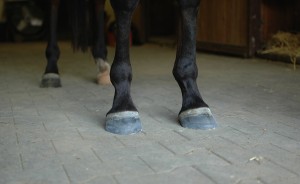 Today, Blouin doesn’t have any trouble racing barefoot at Woodbine. The day he entered his mare Pheisty Phoebe for the first time on the turf, she wasn’t scratched and was allowed to run.
Today, Blouin doesn’t have any trouble racing barefoot at Woodbine. The day he entered his mare Pheisty Phoebe for the first time on the turf, she wasn’t scratched and was allowed to run.
“She went in at 100:1, and at the half she was 20 lengths last,” recalls Blouin. “I was going, ‘Oh no, I’ve just dug myself the biggest hole.’ But they were going very, very fast, and she looked comfortable. By the turn she’d caught up to the last horse and came eight-wide around. It was a photo finish, and we were four horses in it. If she’d slipped and couldn’t hold onto that track there’s no way a horse could have made that move. And she finished fourth, less than three length from winning it.”
Under current Ontario Racing Commission regulations, racing without shoes need only be declared, and is denoted by the letter ‘y’ in the program. Blouin says some bettors are frustrated by it. “They are the ones that scream obscenities. And there are some trainers that like to give comments,” he laughs. “But I think its becoming more accepted. On the Standardbred side there are more guys doing it, though they just do it on race-day. The Hambletonian has been won barefoot.”
Blouin himself has secured a barefoot win on each of the three track surfaces to date – poly, dirt and turf. But he admits that for him, going barefoot amounts to a lot more than simply pulling a horse’s shoes. “I don’t think I would have the quality of feet that I’ve got if I had my horses at Woodbine in stalls for 23 hours a day. You have to be able to give the hoof the right environment and the stimulation it needs. And the right nutrition too.”
For Blouin, it comes down to being able to manage his horses in the way he sees best. His horses spend the better part of their day outdoors, in groups where possible, and Blouin wont race a horse on Lasix either, he says. “Dehydration is rampant in racehorses because of Lasix. And it’s a problem, because they wont eat.”
“To me it’s about doing right by the horse, and that’s a rule I’ve always lived by. Winning doesn’t make me right. It makes me lucky on that day. The right part is your horse coming out of the race enjoying it, seeing their performance improve, and keeping them sound.”
]]>
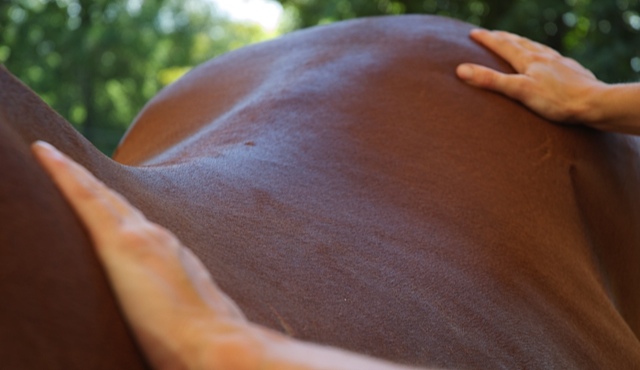
Back pain is an issue that can plague horse and human alike. Though back problems in the horse can be difficult to assess and get a handle on at times, new and ongoing research is lending itself to a better understanding of equine back pain and what we might be able to do to help prevent it. … Read the rest
]]>
Back pain is an issue that can plague horse and human alike. Though back problems in the horse can be difficult to assess and get a handle on at times, new and ongoing research is lending itself to a better understanding of equine back pain and what we might be able to do to help prevent it.
Understanding Back Pain
“Our current model of equine back pain is based on the back pain model in people,” says Dr. Hilary Clayton, equine biomechanics researcher and McPhail Dressage Chair in Equine Sports Medicine at Michigan State University.
“One of the key underlying principles is that the inter-vertebral joints of the spine, like many other joints in the body, have a set of muscles that move the joint and a set of muscles that stabilize the joint. Although mobility and flexibility of the spine are desirable when we are talking about riding and training the horse, the ability to stabilize the inter-vertebral joints is especially important. Without proper stabilization you get a subtle micro-motion of the joint with weight-bearing, which can set the horse up for developing arthritis of the joint.”
Keep reading this story at Horse Journals.
]]>

It was around this time last year that I had the pleasure of working with sports nutritionist Nanci S. Guest for an article on nutritional strategies for riders (for Horse Sport Magazine). With most of my writing focused on the health of the horse, this was a fun and interesting divergence. … Read the rest
]]>
It was around this time last year that I had the pleasure of working with sports nutritionist Nanci S. Guest for an article on nutritional strategies for riders (for Horse Sport Magazine). With most of my writing focused on the health of the horse, this was a fun and interesting divergence. And a valuable one too – how many of us know far more about our horse’s nutritional needs than our own?
In this post I’m going to share some of my key take-away points from our conversation. But if you have the time and inclination – or if you missed it the first time – you can read the full article here: Sports Nutrition for the Rider.
Key Nutrition Tips for Riders
Your muscles need protein!
Muscles need the amino acids from protein to repair and recover after exercise (also essential for building and bulking up those muscles too). Unlike carbs and fats, the body can’t store protein so its essential that we include it in our diet when we need it most.
Chocolate milk is a great recovery food after physical exertion because it is high in leucine – an amino acid that is used up at higher rates during exercise. It also has carbs to replace the fuel that is burned.
And don’t overlook breakfast either. Following an overnight fast during sleep, it’s important to get those amino acids back in the system, particularly when in training or during competition. Nanci likens them to the bricks in building a house. “Even if the frame of the house is there and the workers are ready, they can’t begin building without the bricks.”
Keep yourself hydrated
Even low levels of dehydration have been shown to reduce mental acuity and performance. And if you have been sweating a lot, water alone may not be enough (and could ultimately dehydrate you further).
The body likes to maintain a set balance between salts (electrolytes) and water. If you have lost a lot of salt through sweating and drink more water without food or electrolytes, you will end up diluting the concentration of salts further. In response your body will eliminate the excess water through urination.
Sports drinks, even diluted at a 50/50 ratio with water, are a great solution.
Leave enough time to digest your meals
Bananas, dates and raisins make good snacks because the carbs, which provide fuel for muscles, are quickly absorbed. Things with a higher fibre content take longer to digest, and fats take the longest.
Nanci recommends allowing 45 minutes to an hour to digest a low-fat meal during competition, with the majority of healthy fats being consumed in the evening, when the day’s work is done.
“With exercise, your blood supply is channelled to the muscles, but when there’s a battle between the muscles and digestion, digestion usually wins. If it doesn’t and your exercise is too intense, you’ll end up taking the blood supply away from digestion, which can cause nausea.”
It’s not just what you eat during competition, but your every-day diet that is important
A balanced diet that includes a variety of fruits of vegetables of different colours, as well as sources of healthy fats and protein is what we are striving for.
Where a diet may be deficient in some vitamins and micronutrients, Nanci recommends a multi-vitamin supplement three times a week as a safe-guard, but cautions against over-supplementation. “It’s important that supplements aren’t used to replace food. A poor diet with nutritional supplements is still a poor diet.”
-> Ultimately what I learned from Nanci is that what we eat can really help or hinder us when we get on our horses – whether in the show ring or when schooling at home. As she says, “The better you are able to perform, the better chance you give your horse.” And I think we would all agree with that.
This post is based on information from the article “Sports Nutrition for the Rider,” which was published in the September 2012 issue of Horse Sport Magazine. Many thanks to Nanci S. Guest, MSc, RD, CSCS, registered dietician, certified personal trainer and certified strength and conditioning specialist, for sharing her expertise and insight. A competitive rider herself for 15 years, Nancy provides services in both Toronto and Vancouver through her business Power Play.
]]>
Last fall I wrote this article for Trot magazine based on Equine Guelph’s series of “Beat the Bugs” workshops. As Dr. Scott Weese points out, although infectious diseases are not something we can eradicate, there are simple measures we can take that can have a big impact.
You can read that article here: Biosecurity on your horse farm.
For more information on EHV-1, the AAEP has a good write-up on their website that covers the different forms (respiratory, neurologic), transmission and vaccination.
To follow reported cases by location (US and Canada only), TheHorse.com has an excellent resource, the 2013 EHV-1 Tracker Map.
]]>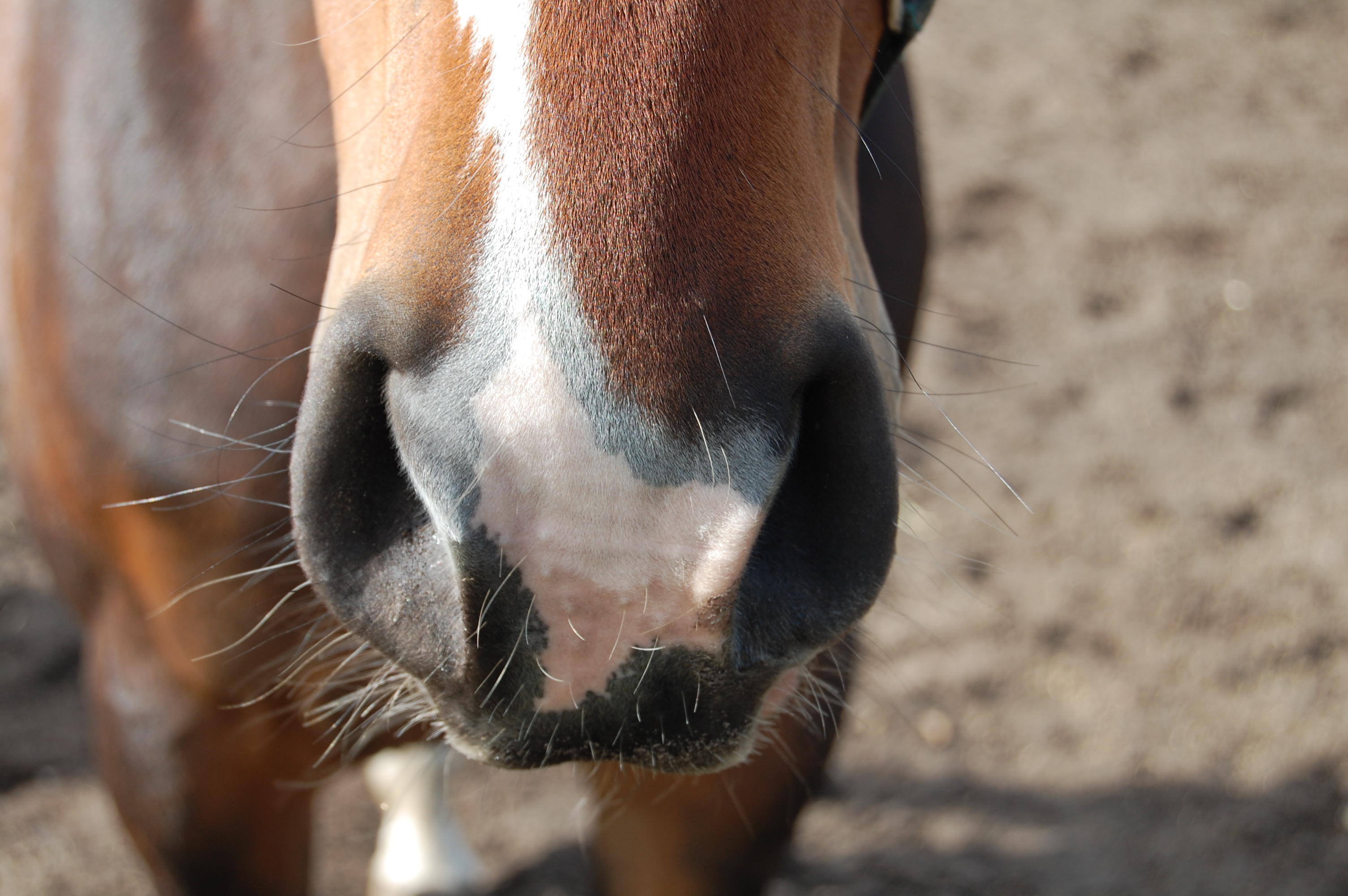
Recurrent airway inflammation and COPD (heaves) in horses can have many underlying causes, but high levels of stable dust are known to play a key role in perpetuating, if not initiating these conditions.
With hay, bedding, arena dirt and so on, stables tend to be rather dusty places – even when well kept and cleaned. … Read the rest
]]>
Recurrent airway inflammation and COPD (heaves) in horses can have many underlying causes, but high levels of stable dust are known to play a key role in perpetuating, if not initiating these conditions.
With hay, bedding, arena dirt and so on, stables tend to be rather dusty places – even when well kept and cleaned.
It’s not what settles but what lingers in the air that is of most concern, and studies have found that levels of airborne dust in equine barns are often in ranges that are known to cause airway disease in people and lab animals.
This article takes a look at simple measures that can have a big impact on improving air quality inside the barn, making it a healthier place for both horse and human.
“Breathing Room” was published in TROT magazine, January, 2010 and is one of the articles included in the course-pack for Equine Guelph’s online course Management of the Equine Environment.
Related:
]]>
